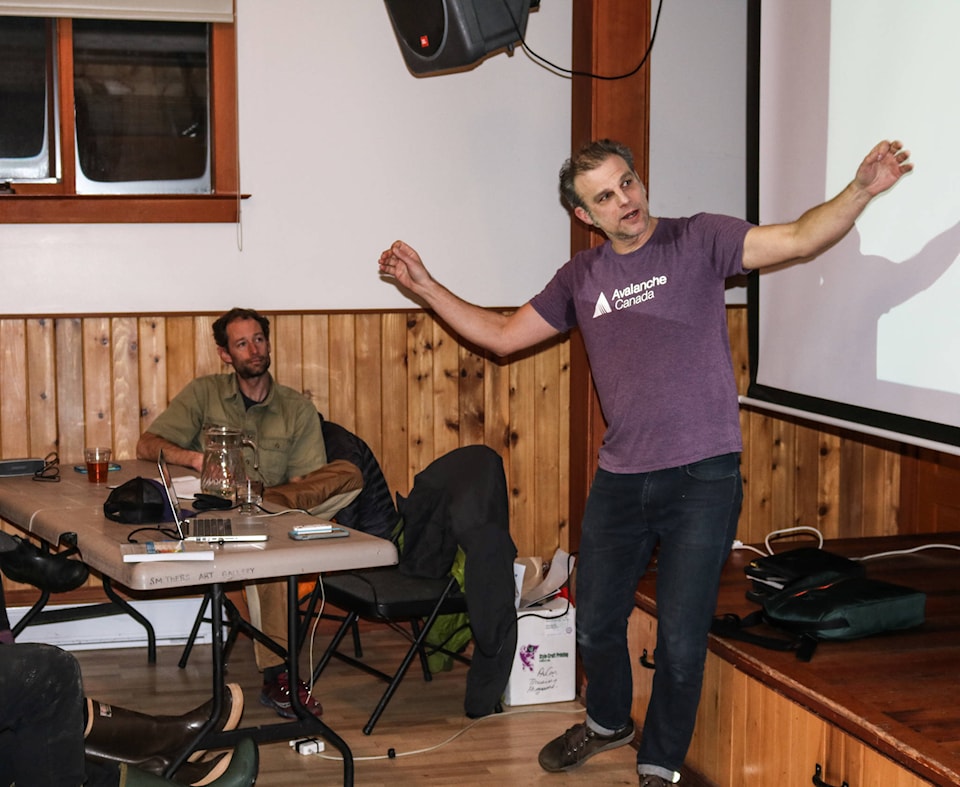It’s been an interesting winter to date what with some of the wide changes in temperature that we’ve had. That has brought quite a range in the types and amounts of precipitation.
That has not stopped many who enjoy the challenge of our local nature from getting out there into the backcountry and experiencing some of the unique beauty only offered there. While these expeditions are enjoyable there are risks involved, in this case the risk of avalanche.
According to Avalanche Canada coordinator Nancy Geismar, playing in the snow is part of being Canadian and awareness and preparation is important for anyone going out into that snowy wonderland.
“There is no time to call for help. There is no time to call 911,” she said.
In order to create greater awareness and give information on appropriate equipment and companion rescue protocols, the Bulkley Backcountry Ski Society and Hudson Bay Mountain Resort hosted sessions last Friday evening and Saturday.
While actual safety training courses do exist, awareness is the first step. Friday night showed how concerned local backcountry enthusiasts are by packing the Old Church to listen to Avalanche Canada experts provide some of the basic information on minimizing risk and what to do if caught.
Mark Bender and Mark Grist went through a very detailed lecture on how to recognize risk factors such as types of snow and alpine terrain. In addition, they reviewed proper equipment which anyone travelling in risk areas should always have, and basic rescue methods.
Perhaps the slides and videos that they presented in association with the different topics brought their personal experiences forward for all to see. These included pictures of completely wrecked snowmobiles wrapped around trees and people in the process of being rescued.
One if the best moments of the evening was a short video of a snowmobiler jumping off his machine onto the snow and going straight down to the bottom of the drift, at least three meters deep. The snowmobile rested easily on the snow by virtue of its weight distribution but the weight of the rider was localized and as a result, he sank straight down.
The rider was rescued with no injury.
Bender and Grist indicated that there are quite a group of different people at risk besides snowmobilers. Skiers and snowboarders like the powder and quite often seek out areas which could be at risk.
Grist said that an emerging group of backcountry enthusiasts was snowshoers.
“There are more and more of them and the way they are, they can access avalanche terrain,” he said.
Saturday the pair conducted field sessions where the participants learned about the avalanche phenomena, risk factors such as terrain and slope. According to Bender, they wanted to give people a taste of what they needed to know.
For information on Avalanche safety training courses contact avalanche.ca/learn.
